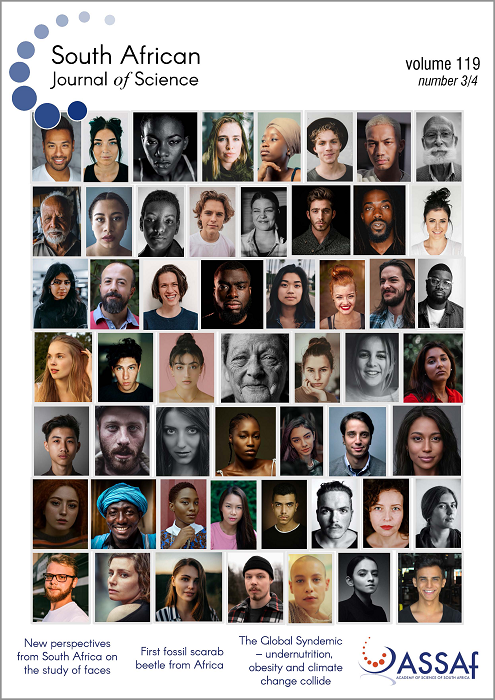Evaluating the utility of facial identification information: Accuracy versus precision
DOI:
https://doi.org/10.17159/sajs.2023/12067Keywords:
facial composites, facial descriptions, identification, eyewitness, face recognitionAbstract
Facial identification evidence obtained from eyewitnesses, such as person descriptions and facial composites, plays a fundamental role in criminal investigations and is regularly regarded as valuable evidence for apprehending and prosecuting perpetrators. However, the reliability of such facial identification information is often queried. Person descriptions are frequently reported in the research literature as being vague and generalisable, whilst facial composites often exhibit a poor likeness to an intended target face. This raises questions regarding the accuracy of eyewitness facial identification information and its ability to facilitate efficient searches for unknown perpetrators of crimes. More specifically, it questions whether individuals, blind to the appearance of a perpetrator of a crime (i.e. the public), can correctly identify the intended target face conveyed by facial identification information recalled from eyewitness memory, and which of the two traditional facial identification formats would be better relied upon by law enforcement to enable such searches. To investigate this, in the current study (N=167) we employed two metrics – identification accuracy and identification precision – to assess the utility of different formats of eyewitness facial identification information in enabling participants to correctly identify an unknown target face across three different formats: facial descriptions, facial composites and computer-generated description-based synthetic faces. A statistically significant main effect for the format of facial identification information on identification accuracy (p<0.001) was found, with a higher target identification accuracy yielded by facial descriptions in comparison to composites and description-based synthetic faces. However, the reverse relationship was established for identification precision, where composites and description-based synthetic faces enabled significantly greater precision in the narrowing down of a suspect pool than did facial descriptions, but did not necessarily result in the retainment of the intended target face (p<0.001).
Significance:
- This study highlights the relative importance of person descriptions in being as effective as, if not better than, facial composites in allowing for accurate identifications when solely relying upon eyewitness facial identification information to facilitate the search for unknown perpetrators.
- We introduce the metric of identification precision to evaluate the utility of facial identification information obtained by eyewitnesses.
- The study provides a novel approach to directly model facial composites based on a person description using traditional fourth-generation composite systems, thus producing a computer-generated description-based synthetic face that resembles a target face observed by an eyewitness.
Published
Issue
Section
License

All articles are published under a Creative Commons Attribution 4.0 International Licence
Copyright is retained by the authors. Readers are welcome to reproduce, share and adapt the content without permission provided the source is attributed.
Disclaimer: The publisher and editors accept no responsibility for statements made by the authors
How to Cite
- Abstract 374
- PDF 678
- EPUB 439
- XML 196












.png)